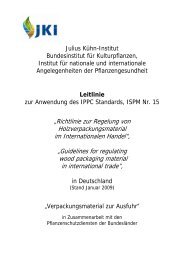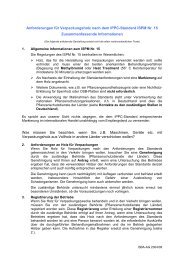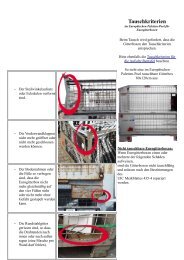CP CHEMICAL INDUSTRY PALLETS - PalletBiz
CP CHEMICAL INDUSTRY PALLETS - PalletBiz
CP CHEMICAL INDUSTRY PALLETS - PalletBiz
Create successful ePaper yourself
Turn your PDF publications into a flip-book with our unique Google optimized e-Paper software.
April 2004<br />
<strong>CP</strong> <strong>CHEMICAL</strong> <strong>INDUSTRY</strong> <strong>PALLETS</strong> Edition: 6<br />
The average deflection at point A, B & C of each pallet shall be lower than the maximum deflection<br />
values shown in table 11. If the average deflection exceeds those values, the Safe Working Load of<br />
racked pallets has been exceeded. The applied load has to be reduced and the test shall be repeated<br />
with less weight until no exceeding of the maximum deflection is measured.<br />
<strong>CP</strong>-design Maximum deflection Average breaking load<br />
1 12 mm 10,2 kN<br />
2 12 mm 14,8 kN<br />
3 19 mm 9,0 kN<br />
4 14 mm 9,8 kN<br />
5 12 mm 13,5 kN<br />
6 16 mm 18,2 kN<br />
7 17 mm 16,3 kN<br />
8 18 mm 19,6 kN<br />
9 17 mm 15,8 kN<br />
Table 13<br />
The values in table 13 have been defined with the bending test specified in ISO 8611. The maximum<br />
deflection corresponds to the value at 50 % of the breaking load, which means the rated load of the<br />
pallet with a safety factor of two. The average breaking load has been defined with 5 replicates<br />
constructed from a weak wood species but conforming to the specified timber quality with an ultimate<br />
strength in static bending of 42 N/mm². The test described here above should be performed with pallets<br />
of comparable quality.<br />
Deflection tests are not necessary when the Safe Working Load has already been defined for similar<br />
applications.<br />
Page 15 of 16. -





